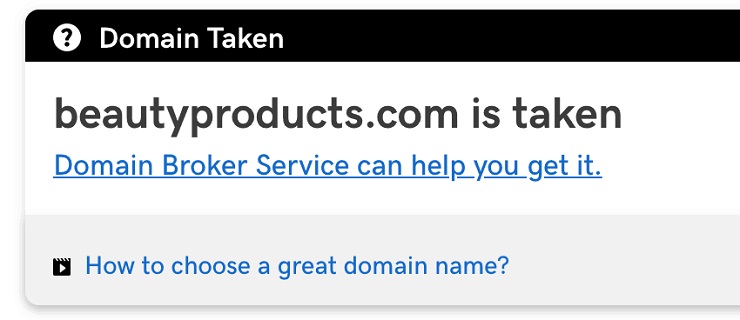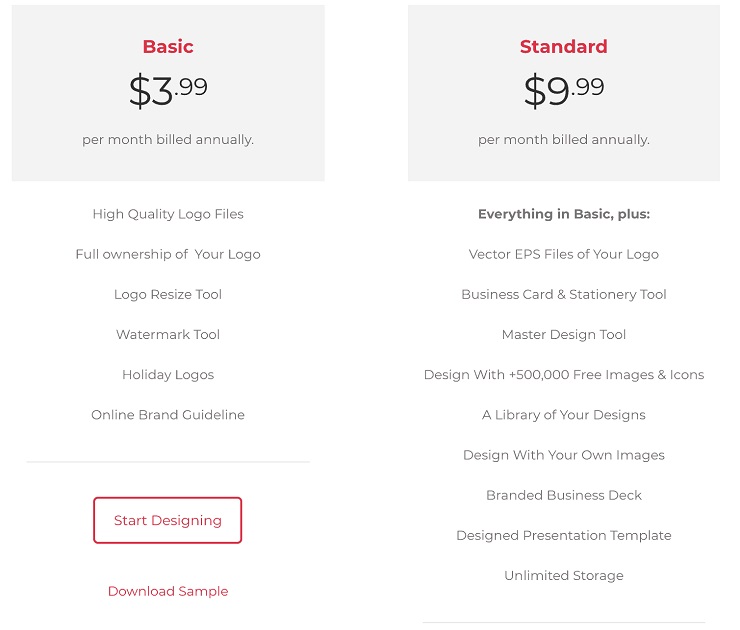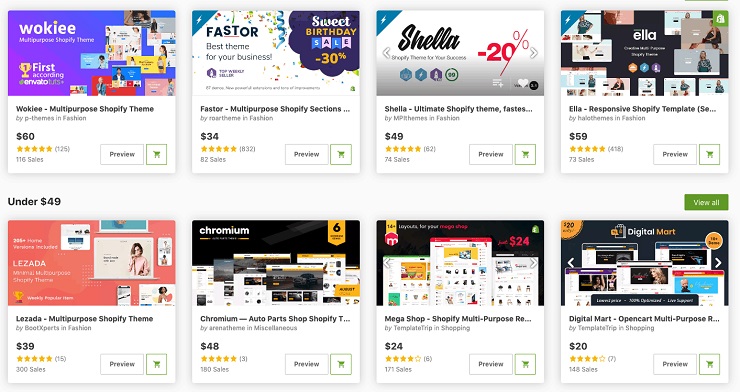The ecommerce world beams with opportunities for financial success, job independence, and life satisfaction. But success comes with a price.
I’m not talking about an emotional cost (although that may also be true), but a financial one.
In order to get a profitable ecommerce store running, you need to make a lot of decisions, including choosing the right product, how to manufacture and store it, great branding, and so much more.
Many of these decisions will have long-term financial impacts on your operations and profit margins.
With so many decisions to make, you can easily get paralyzed. The problem isn’t the cost of each decision, necessarily, but the uncertainty. How much will each decision cost you? How will these costs impact your business?
To help you understand how much it costs to start an ecommerce business before you open the doors to your store, in this article, we’ve laid everything out for you. We’ve broken down the most important elements of starting an ecommerce store and the potential costs of each one.
Every business will vary to some extent, and there are always odds and ends that will arise and shift along the way. By the end of the article, you will have a clearer understanding of how much your ecommerce store will set you back.
Hosting
Cost: $0
Let’s start with an easy decision: hosting.
Actually, there’s no decision. All the large ecommerce platforms—Shopify, BigCommerce, etc.—offer free hosting with their accounts.
That means you don’t have to worry about it. Whether you get a large spike in traffic or you have no traffic at all, you pay zero dollars. And you get all the benefits of a store that’s open 24/7, pretty much without fail.
Domain
Cost: $0 to $14
The domain you choose matters a lot for your brand. It works like a billboard hanging over your store—if you pick the wrong one, you could give the wrong impression to your visitors. Ideally, your domain should match the name of your business.
Most available domains are cheap: a .com top-level domain (TLD) costs $12 a year, whereas a .net, .org, and .co cost between $10 and $14.
You can purchase a domain through GoDaddy or Namecheap, or you can buy it directly through the main ecommerce platforms, like Shopify.
It’s worth noting that if you can’t find the exact domain you want for your brand, it may be up for sale by a third party, to purchase at a higher price. That price will depend on many factors, but can reach even into the millions.
While the branding and SEO benefits of the right domain are important, the cost will often exceed the benefits, at least in the early days. Unless you have some reason to think it’s critical for the success of your store, it’s a good idea to settle and stay within your price range.
If you can’t find the right domain for your brand, you can always use a prefix or suffix like “the” or “store.”
For example, if your store was called “Beauty Products,” you’d see that BeautyProducts.com is taken, but available for purchase through a broker.
In that case, you can search for “BuyBeautyProducts.com” and you will see that the domain is available.
While buying a domain with a prefix or suffix may be disappointing, it’s not going to make or break you. In the future, you can always purchase a better domain and redirect it to your store.
Branding
Cost: From a few dollars to $20,000
Branding is a critical aspect of any successful business. It represents your company as a whole; its values, identity, and audience.
Because you can’t easily quantify the need for any of these elements, it can be easy to overlook branding—until it’s too late and you realize your customers don’t feel comfortable doing business with you.
You can always simplify your branding and do it yourself—designing the logo, the visual assets, etc.—but that can be risky.
At the same time, you can go to the other extreme and hire an expensive brand design agency and, as explained in Techcrunch, pay anywhere between $5,000 to $20,000 for something that may not be necessary or even the right fit at the start of your business.
The right price to invest in your branding is somewhere in between these two extremes. You want to leave the branding to an expert, but avoid paying a sum that’s beyond your budget.
There are some software companies that allow you to automate or create branding yourself for a low price. Tailor Brands, for example, asks you a few questions about your brand, and based on what you tell them, they automatically generate different options you can choose from.
The pricing is interesting because they don’t charge you a one-time fee for the design, as most designers would, but a subscription. These subscriptions range between $4 to $10 per month, depending on the plan you choose.
However, you don’t have to keep the membership after you’ve created a logo. Unless you plan to design several other brand assets, like business cards and stationery, a subscription isn’t necessary. That means, you will end up spending between $4 to $10 for a basic yet useful logo, a great return on your investment.
Because other companies who use Tailor Brands will also use similar visual assets, you might sacrifice some uniqueness, but it’s a good compromise between quality and price.
Canva is another popular option that allows you to more easily create your own branding, using simple design tools and templates. It also charges a subscription fee between $10 and $13/month, along with add-ons.
An even better option is to get a freelancer to help you out. You can check Upwork, which features designers starting as low as $10 per hour, to 99Designs whose plans start at $599 for a logo and a brand identity pack.
While Upwork can be cheaper, you will need to spend a lot of time vetting the designers who apply for your job and following up on the entire design project. This means that even if you hire a designer at $10 per hour, an entire project may take them 20 hours, which means you will spend $200 in total.
Alternatively, you can go to Dribbble, the prime social network for designers, and check for ecommerce store designs.
You can then check the designs you like and contact the designers who made them.
At the end of the day, the right branding decision on depends a lot on your product, its uniqueness and positioning in the market, and the competition.
Store Design
Cost: $0 to $500,000
Web design is an extension of your brand, and because of that, it deserves a separate analysis.
While you need to keep your brand and your store design coherent, you can still get a store design template, customize it to fit your brand, and save a lot of money in the process.
To start, there are free templates you can use, but that will come at the cost of some of your brand’s unique identity. The more people use the same design, the less you’ll stand out.
Envato provides a wide variety of premium store design templates at reasonable prices, from $20 to $60, as will any ecommerce platform you may use.
If you think some of these prices are expensive, remember that a web designer will charge you 10x more.
To make your store look unique and adapt to your brand, you can then hire a web designer or a front-end developer to add custom HTML, CSS, and Javascript around your site.
As with your branding, you can go to a freelance platform like Upwork to get this type of job done at a reasonable price.
If you prefer to take the custom road, a web designer/developer can create a design for you and then code it in your store (write the HTML and CSS).
According to Justin Smith, CEO of Outerbox, a company that provides ecommerce web design, a custom web development service can cost anywhere between $10,000 to $500,000.
Of course, the more complex your needs, the more expensive it will be. If your goal is to develop just a basic ecommerce store, then the costs will be on the lower end of that scale.
Here’s a handy breakdown Justin provided that will help you out:
Whatever the choice you make, remember that your store’s design is paramount to your success, so make sure to invest as much as your budget will allow.
Your store is your free, full-time salesperson—the better it does its job, the more profitable it will be for you.
Manufacturing
Cost: $1,000 to $100,000 and beyond
Manufacturing is probably the most expensive part of the process. Understandably, having an industrial plant create a product for you en masse can cost quite a lot of money. The overall manufacturing costs, however, will depend on many variables.
To start, you need to consider the complexity of your product. The more complex the product—the more pieces it has, the harder they are to put together— the more it will cost you. If your product requires a lot of high-skilled human labor, that will raise your costs a lot as well. Also, the higher the quality of your inputs, the more expensive each unit will cost you. Think of an electronic product versus clothing.
Another point to consider is the volume you purchase. The higher the units bought, the more expensive the overall price will be.
Still, avoid looking at the total cost and focus on the unit cost instead. Economies of scale mandate that the more your manufacturer produces of a product, the less expensive it will be per unit. Even if you spend more money to manufacture a high number of units of your product, you will save money per unit produced and thus increase your profit margins.
If you want to get a feel for the unit costs of the product you’d like to manufacture, you can check Alibaba. Alibaba is filled with (mostly) Chinese manufacturers who provide rough estimates of their products’ costs.
If you plan to private label (i.e., resell an existing product with minor modifications in its design), you will get a defined unit cost in advance.
But if you plan to manufacture your product from scratch, that will require you to talk directly with the manufacturer to get a better estimate. You will need the list of inputs your product requires for its production and the industrial designs so the manufacturer can give you a good estimate.
In case you want to know if a manufacturer can produce original designs, check for “OEM” anywhere in their product listing or company profile.
“OEM” stands for “Original Equipment Manufacturer,” a term that refers to companies that create products from original industrial designs.
With all this said, you should still remember that you don’t have to manufacture your products in China. Whether you are worried about the new trade issues between China and the United States or you prefer to keep operations closer to home, you can still take their costs as an approximation.
If you decide to work with local manufacturers, you can use the data and knowledge taken from your conversations with the Chinese manufacturers as leverage to base your conversation with the company.
Other Expenses
Photography
Cost: $25/photo to a few hundred to buy photography equipment
There’s one problem all ecommerce store owners face: lack of trust.
An online store can’t offer the usual experience people go through when they visit a retailer—touching the product, trying out the product.
But you can help people almost experience the product through great photography.
Product photography goes beyond taking a photo with your phone; it involves professional lighting, a white background, and if possible, a model who can show what the product looks like in real life.
But for the sake of simplicity, let’s focus on the standard photography over a white background.
There are two roads you can take:
- You can DIY it, which involves buying a white background, a lighting set, and a camera.
- You can outsource it to an experienced ecommerce photographer.
As Max Therry explained in our article on the subject of product photography, you can either use a smartphone or a cheap compact camera like the Panasonic Lumix ZS100 or the Sony Cyber Shot WX220, among others.
If you take the DIY road, the cost will be much higher than outsourcing, but in the long term, the purchase will pay for itself.
This is a good road to take if you plan to sell large numbers of products. Eventually, you can hire a photographer to take photos using your equipment, thus mixing both options but at a lower cost.
If you use your smartphone, you will save yourself a lot of money, since the camera is the most expensive part of the equation. A lighting set costs no more than $50 on the cheap end of the spectrum (the LimoStudio set is the cheapest, most popular one on Amazon), while a background set costs between $80 and $120.
You can also find many photo studio sets that include everything, ranging from $120 to $150.
If you plan to sell a smaller number of products, and you want to save time and energy in the process, then it’s a much better idea to outsource the entire process. Companies like Product Photography and VisualSKUs charge around $25 per photo and per product.
As you can see, the costs can rise if you want a “lifestyle” photograph or if you want a 360-degree shot.
Still, outsourcing is a good, viable, and relatively cheap option for your product photography if you plan to sell just a few products.
Inventory & Logistics
Cost: Depends on your products, sales volume, and customer location
Inventory and logistics are two often overlooked aspects of the operations of any retailer, both off-line and online.
Fortunately, inventory management has become quite easy thanks to the great default inventory management features all large ecommerce platforms offer.
The two key costs to consider are warehousing and transportation.
While you can manage both aspects separately—that is, have a company that manages your inventory and then have a transportation company pick up the delivery—an easier and more streamlined way to solve this issue is to use a third-party logistics (3PL) company.
These companies provide professionally managed inventory and logistics services that allow you to outsource everything in relation to your logistics, from warehousing to distribution.
Considering that 86% of the Fortune 500 companies and 96% of the Fortune 100 use 3PL companies to manage their logistics, you should consider using one of these services.
Two companies you might consider are ShipBob and Whitebox. Unfortunately, these companies don’t offer flat prices like most software companies; you need to contact them and get an estimate.
The increased costs of using a 3PL may seem higher than doing it yourself, but the headaches, time, and money you will save in the long run make it the best decision you can make.
Work on growing your ecommerce store and let the logistics professionals do their job.
Software Tools
Cost: Depends on the number of tools used and each individual tool
In order to run your company flawlessly, you will need the help of software tools, whether that’s for marketing, accounting, operations, or other needs.
There’s an almost unlimited number of tools you could consider using. Just check the number of apps available in Shopify’s app platform:
Obviously, you don’t need to use a fraction of those. While it can be tempting to buy new additions left and right, the fewer the tools you use, the easier your life will be.
Consider using just a few basic tools, like software for accounting, list building, email marketing, and customer support.
The costs you can expect to pay for each tool in each category will depend on the tool itself, but to give you an idea, here’s a list of the most popular tools in each category:
Accounting:
List Building:
- Sumo: It’s free or $39 per month for more advanced accounts
- OptinMonster: Between $9 and $49 per month (paid annually)
- Thrive Leads: $67 for one license
Email Marketing:
- Campaign Monitor: It starts at $9 per month for its most basic plan
- MailChimp: Free for basic accounts; paid plans start at $13 per month.
- Omnisend: Free for up to 250 contacts; paid plans start at $16 per month and include email, SMS, and push notifications.
Foundr members get 50% off their first three months with code FOUNDR50. - Klaviyo: It’s free for up to 250 contacts; its most basic plan starts at $20 per month
Customer Support:
- LiveChat: Between $16 and $50 per month
- Intercom: Between $38 and $78 per month
- Olark: It starts at $17 per month per agent
Wrap Up
After looking at all these numbers, you may feel like you need to spend a lot of money before you even make a single sale.
That couldn’t be further from the truth. When getting started, pick the fewest number of tools needed and grow slowly from there.
While you will face many challenges, starting lean will help you keep your profits high—profits that you can then re-invest immediately and build a virtuous cycle of growth.
For more information on ecommerce in general, here’s an in-depth post on how to start an ecommerce business.
Now let’s hear from you:
Which of the tools mentioned in this article are you planning on using? How much money do you think you need to spend to get started with your store?
Share your comments below!

































